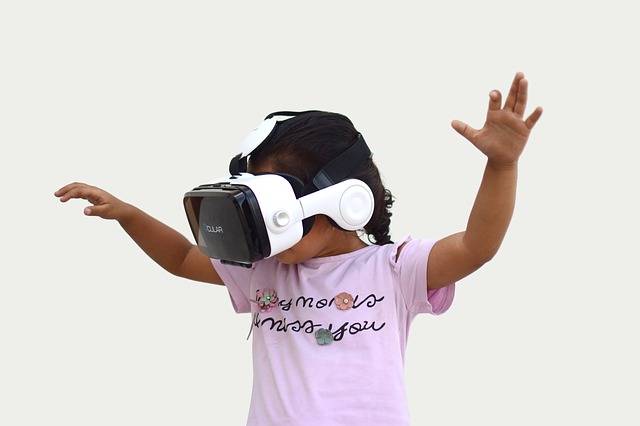Augmented Reality (AR) gained familiarity in households with the 2016’s launch of PokemonGo. Although it is still being perceived to be in its infancy, it is not. It has had extensive applicability in some or the other way across multiple verticals over the past decade, and now, has landed up capturing immense interest from the world of retail.
In recent years, while Virtual Reality (VR) has been taking the entertainment industry by storm, AI is seemingly finding its own foothold in retail. With AR in clear picture, augmentation of the real world with superimposed perceptions stays no more a tech-dream, rather a reality of the near future. The consumer has been at the center stage for businesses. Today, almost everything that businesses do is focused on what and how their customers want.
While the success of retail game continues to revolve around delivering ever-superior customer experience, technological blessings such as AR will remain an indubitable part of the journey towards achieving it. A high level of interactive, communicative, and appealing customer experience that businesses can offer with AR allows both customers and brands to indulge in a completely new, immersive environment.
The past couple of years are a sign that AR in retail world has already embarked on a mission to enhance both the sides of the retail coin — online and brick-and-mortar — to transform forever the way people have been shopping. Ultimately, it is intended to blur the lines between offline and online retail, impacting all the stages of sales funnel — to craft an improved customer experience at the end.
AR’s immersive experiences are best absorbed by the retail industry.
Whether it is about delivering an enhanced customer experience by bringing the entire in-store experience to households or creating outstanding brand awareness by incorporating AR in products, retail industry ranks top when it comes to leveraging the most of what AR offers. A sizeable chunk of shopping population now prefers to shop at retailers that provide an AR experience, which clearly points to the fact that those who realize the potential of AR early will survive the bottleneck over those who still choose to remain incognizant.
How does AR facilitate customer engagement?
- Immersive product catalogs probably make the best advantage of using AR in retail. With an option to preview desirable products, 3D product catalogs become a boon especially for those online retail brands that do not own a physical store or showroom.
- AR-enabled product catalogs to allow such retailers to construct appropriate AR apps to showcase an entire products range that is on sale. While this will potentially curtail the rate of product returns, brands can expect considerable savings in this customer service area.
- Product categories such as cosmetics, apparel, and accessories among others are made available to customers for virtual trial, via AR. With customizable UX content and a wide selection range to choose from, AR can effectively facilitate purchasing decision of customers.
- Convenient and informative in-store navigation is another exceptional benefit that AR offers to retail consumers. Mobile apps even aid in creating precise shopping lists and guide customers through the product locations accordingly.
- Retail leaders are already frontrunners in adopting AR technology to strategize on appealing marketing tactics. Capturing consumer sentiments, modern retail advertising can lure Gen X and Millennial consumers through AR-powered apps.
AR is traversing multiple product categories.
Clothing & shoes, furniture & décor, and groceries are currently the most popular categories among shoppers of AR-enabled retail stores, online and offline. Jewelry and makeup & cosmetics are witnessing a spectacular surge in sales at AR retail stores, of late. Kids’ toys are observed to be another rapidly emerging segment among shoppers, when it comes to tracking consumer preference at AR retail brand stores. On the other side, with an expanding population that is increasingly preferring shopping via smartphone apps of brands, it is more likely that the role of mobile applications in popularizing implementation of AR in retail.
More than half of the shoppers look at AR as simply a fun shopping tool, whereas more than that wish to know more about the product information through AR. The almost 3/4th’s of the shoppers’ asked, wanted AR enabled features, to look for a particular size, style, shape, color. Customers wanted to understand other similar features of products, says research. Unsurprisingly, AR is emerging as desirable among retail brands at a breakneck pace.
Fashion, furniture, shoes, and more — brands are embracing AR.
A popular furniture brand based in Sweden, Ikea, was one of the first retailers to launch an AR catalog that let customers visualize the actual placement and appearance of furniture in their homes. Creating a hype around their new sneaker launch, Nike also did an effective use of AR technology.
Airwalk’s AR powered invisible pop-up store was a big hit and one of its kind that delivered excellent results in a short period, in terms of promotion of Airwalk Jim — the brand’s limited edition re-launch. Zara’s in-store AR displays have been a breakthrough for fashion retail. 3D technology fitting room features by GAP’s AR app is another example of revolutionizing retail in the clothing and accessories category.
AR-enabled in-store interactive mirrors will remain an excellent marketing solution for makeup, cosmetics, and accessories brands. Moreover, intelligent dressing rooms that operate by touch screens will provide detailed information about product availability in clothing segment that customers inside rooms are trying on.
While there are several more use cases of AR appearing on the retail horizon every day, the exact measurement of the effectiveness of this technology still seems to be in an unexplored realm. Brands ought to gather an all-inclusive adequate AR-based data reflecting their customers’ actual AR retail experience to know what they are thinking about, and more importantly, what they’re not thinking about.
The insights presented in the article are based on a recent research study on AR in Retail Market by Future Market Insights.


















